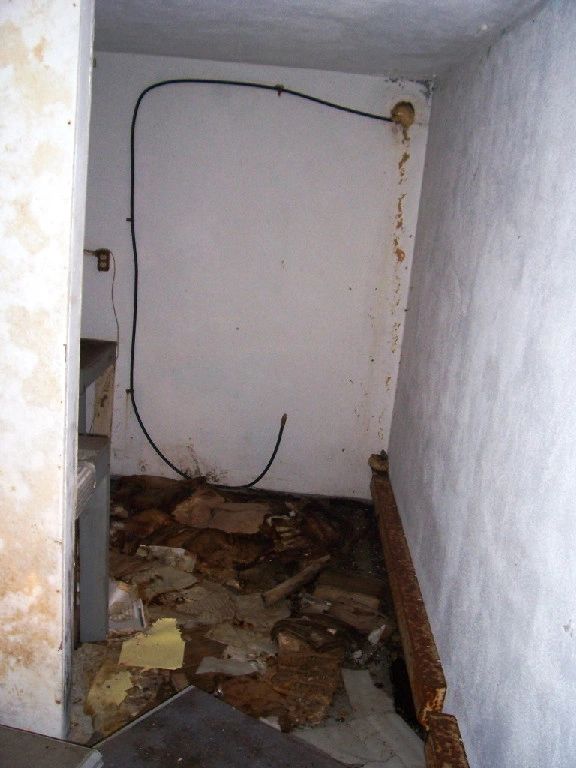WNLC Bomb Shelter
The station first came on the air in 1938 and in the sixties moved their studio and transmitter to Foster Road. At some point a bomb shelter was constructed in the side of a nearby hill with an operational studio installed for use in emergencies. Reportedly the shelter also contained a 500 watt radio transmitter!
The station signed off for the last time in November, 1998 and the FCC canceled license as of 11/03/98.
All that remains of the station's facility is the studio building pad and some tower bases. However when we visited in 2010 we were able to locate the bomb shelter which although trashed by vandals was still intact.
Pictures of the rest of the remains of WNLC can be found here: http://www.hartfordradiohistory.com/WNLC__AM_.html

Picture of the WNLC bomb shelter taken in 1982.

When we went looking for the old WNLC bomb shelter in August, 2010 we weren't exactly sure of it's location and as you can see in the photo above the area is quite overgrown. But after walking around for a few minutes we spotted a conduit sticking out of a mound of earth. It was the vent pipe for the shelter.

The front of the WNLC shelter. The walls and ceiling were close to two feet thick.
Note the small opening to the right of the door. More on this below.

Looking in the front door. Since the door had been pried open and the
shelter had clearly been open to the elements for years we weren't
sure exactly what we would find inside.

Inside the front door you pass through a short corridor and then have to take a sharp, right angle turn to enter the first room. These right angle turns were common in shelters and used to prevent blast/radiation from entering the shelter. Like other similar era shelters found at radio stations this shelter lacked any kind of air filtration that would be needed to prevent fallout from entering the structure.
Inside we found two rooms. The large room shown above approx 10' x 10' and around the corner a smaller room, approx. 6' x 10' that was apparently used as a studio.
This picture is taken looking back at the entrance corridor.

Another view of the main room looking out of the studio back towards the entrance
corridor. Note the odd box protruding into the room which had doors on both sides.

Looking into the studio area. The cable on the wall reportedly
connected to a 500 watt emergency AM transmitter.

This is the area where the "operational studio" was. Old program logs are strewn about. This studio probably contained a mixing console, microphones, tape recorders and turntables but that equipment is long gone but you can see the counters that supported the equipment and made up the operating position.

Looking back at the exit corridor.

Electrical panel and conduits to the main building.

Odd small enclosed box with pass through door adjacent to the entrance corridor.
We're not sure what this was used for. Any suggestions?

Looking out the door at the beautiful summer day.

